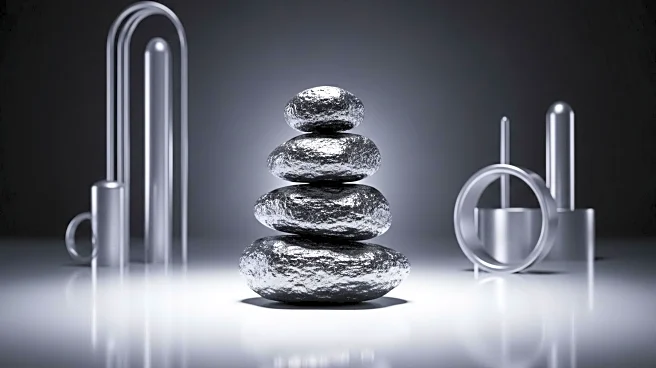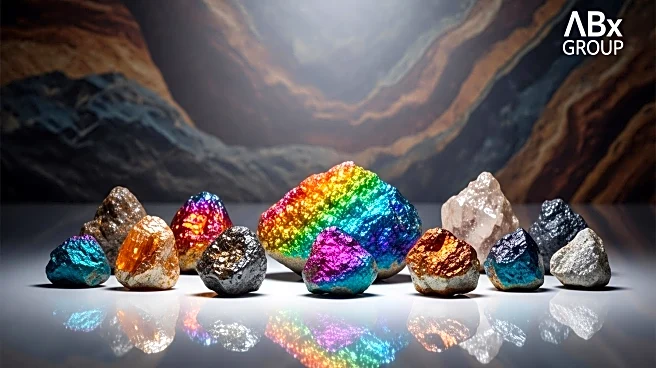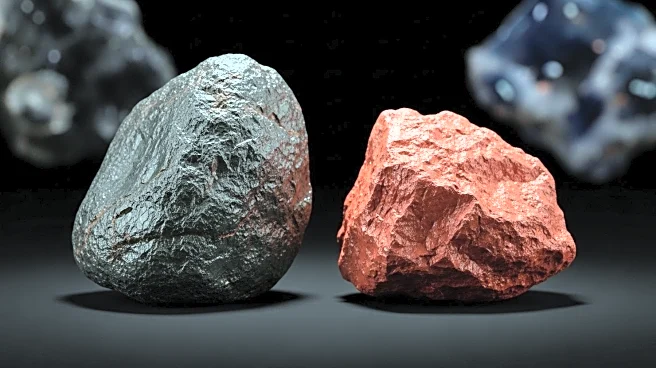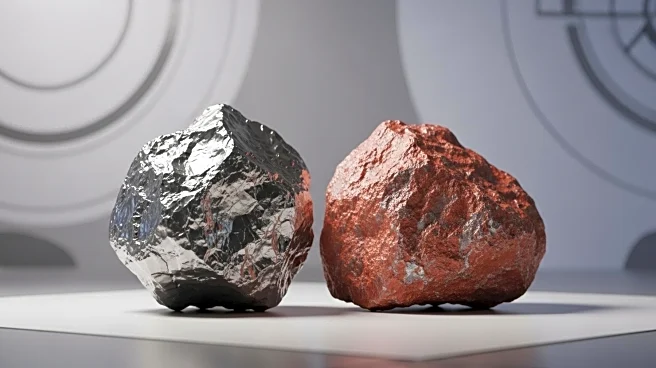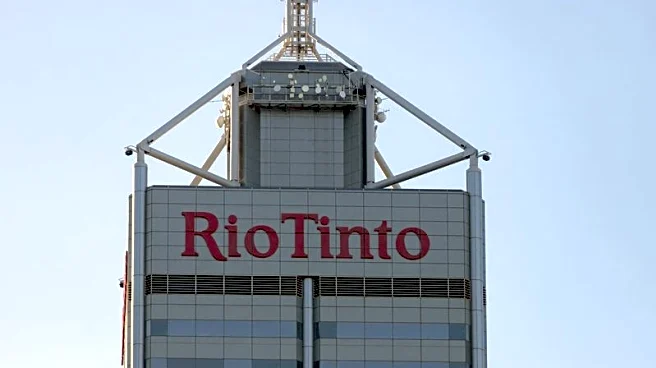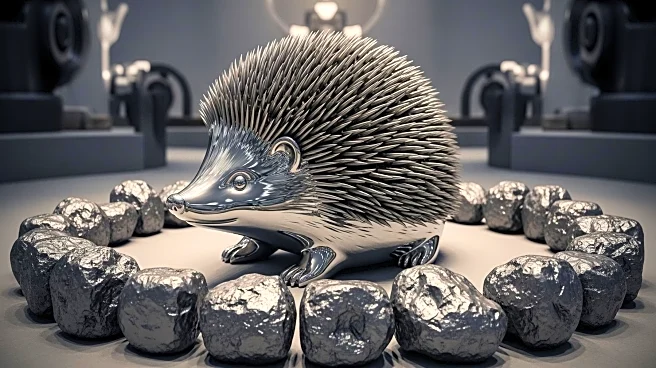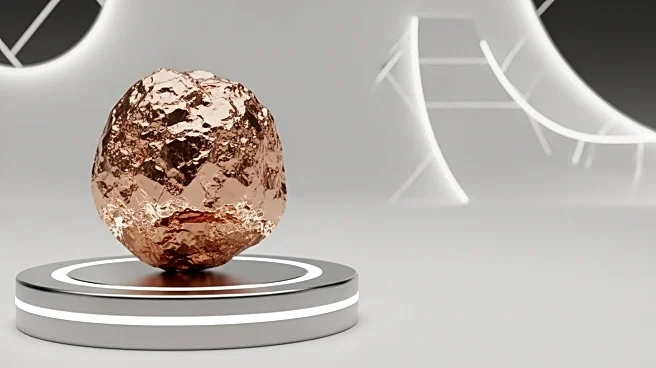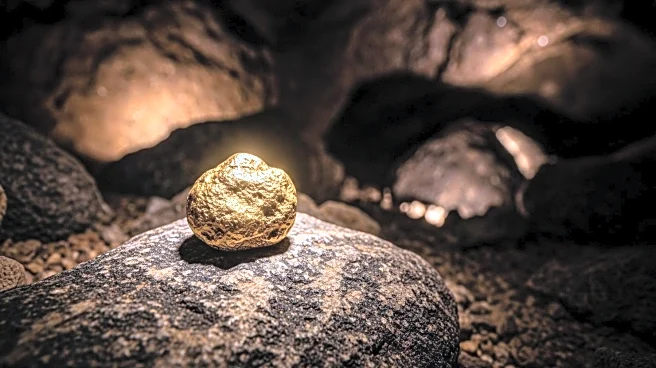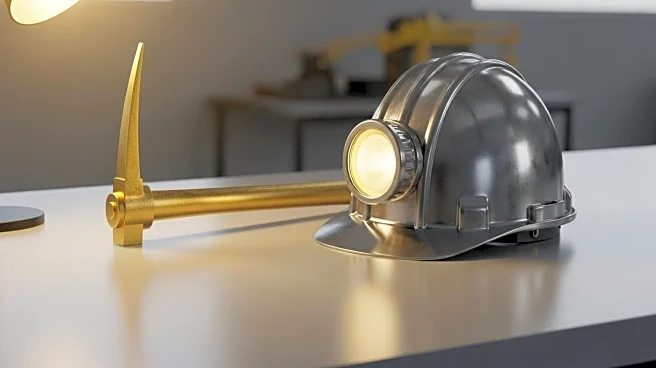What's Happening?
Rio Tinto has reported stable iron ore exports for the third quarter of 2025, with a total of 84.3 million tonnes exported, marking a 6% increase from the previous quarter. Despite plateauing steel demand from China, the company has maintained its production
levels and is on track to meet its full-year shipment guidance of 323 to 338 million tonnes. Additionally, Rio Tinto has seen a 9% year-on-year increase in copper equivalent production, driven by strong performance at the Oyu Tolgoi project and the Kennecott mine. The company has also secured government approvals for the West Angelas Sustaining Project as part of its iron ore replacement strategy.
Why It's Important?
The stability in Rio Tinto's iron ore exports is significant as it reflects the company's ability to maintain production levels despite external market pressures, such as fluctuating demand from China. This stability is crucial for the global steel industry, which relies heavily on consistent iron ore supply. Furthermore, the increase in copper production positions Rio Tinto to capitalize on the growing demand for copper, driven by the expansion of renewable energy technologies and electric vehicles. The strategic developments, including government approvals and operational improvements, enhance Rio Tinto's capacity to sustain and potentially increase its market share in the mining sector.
What's Next?
Rio Tinto is focused on delivering a strong finish to the year, with growth projects progressing rapidly. The company has started loading first ore at the Simandou mine for transport to the port, indicating potential future increases in production capacity. The introduction of a new operating model and executive team aims to simplify business structures and enhance shareholder value, suggesting potential organizational changes and strategic shifts. Stakeholders, including investors and industry partners, will be closely monitoring these developments for impacts on production forecasts and market dynamics.
Beyond the Headlines
The strategic division of Rio Tinto into three primary divisions—Iron Ore, Aluminium and Lithium, and Copper—reflects a broader industry trend towards specialization and efficiency. This restructuring could lead to more focused investment and innovation within each division, potentially driving advancements in mining technology and sustainability practices. The review of Borates, and Iron and Titanium divisions may indicate future divestments or strategic pivots, impacting global supply chains and market competition.
